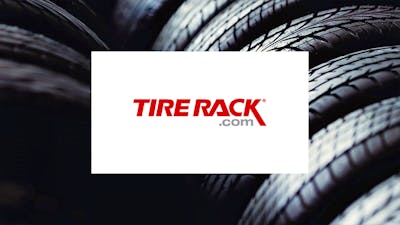Best Tires for the Jeep Renegade
If you're looking for the best tires for your Jeep Renegade, Car Talk experts are here to help. Ask a group of people where to buy tires and which ones are the best option and you’ll get a different answer from each person. Ask a bunch of Jeep owners, especially those who have purchased tires for their Renegade, and you’ll find a short list of recommended Jeep Renegade tires by consumers based on personal experience.
Get the Best Deals on Tires
Whether you have a base model, a fully-loaded model, front-wheel drive or four-wheel drive, Car Talk has you covered here. Our recommendations are based on consumer surveys and tire reputations and our advice is based on your needs for your particular Renegade and how you drive it. So buckle up and let's get into some tire options.
Have an older Jeep Renegade? See tire sizes for previous years.
Best Tires for Jeep Renegade FWD Models (17-inch wheels):
Firestone Champion Fuel Fighter - Best budget tire
- Wet performance
- Dry performance
- Winter performance
- Tread life
- Low “T” speed rating
BFGoodrich Advantage T/A Sport - Best mid-priced tire
- Superior dry traction
- Superior wet traction
- Road noise
Goodyear Assurance WeatherReady - Best superior tire
- Winter traction
- Wet performance
- Road noise
Best Tires for the Jeep Renegade 4x4 w/ 16-inch Wheels:
Kumho Solus TA11 - Best budget tire
- Tread life
- Winter performance
- Road noise
BFGoodrich Advantage T/A Sport - Best mid-priced tire
- Superior dry traction
- Superior wet traction
- Road noise
Goodyear Assurance WeatherReady - Best superior tire
- Winter traction
- Wet performance
- Road noise
Best Tires for the Jeep Renegade 4x4 w/ 17-inch Wheels:
Dunlop Signature II - Best budget tire
- Dry performance
- Wet performance
- Winter traction
Pirelli P4 FourSeasons Plus - Best mid-priced tire
- Dry performance
- Overall comfort
- Winter Performance
Goodyear Assurance WeatherReady - Best premium tire
- Winter traction
- Wet performance
- Road noise
Best Tires for the Jeep Renegade 4x4 w/ 18-in Wheels:
Bridgestone Dueler H/P Sport - Best budget tire
- Wet performance
- Dry performance
- Tread life
Goodyear Assurance Maxlife - Best mid-priced tire
- Wet performance
- Road noise
- Tread life
Goodyear Assurance WeatherReady - Best superior tire
- Winter traction
- Wet performance
- Road noise
Original Equipment Renegade Tires
What tires originally came with your Jeep Renegade? That depends a little on model year and a lot on wheel size. The following are for 2020 model year Renegade models with front-wheel drive and four-wheel drive in the three wheel sizes available for this Jeep:
- Front-wheel drive models (FWD) of the Jeep Renegade have 16-inch wheels with tires sized 216/60R17. There are three original equipment manufacturer (OEM) tires and which your Renegade included will depend on its date of manufacture and dealership delivery location. Those three are: Dunlop Signature II, Kumho Crugen Premium, and Continental Crosscontact LX Sport.
- Four-wheel drive (4WD) models of the Renegade have three wheel sizes, starting with 16-inch wheels and tires sized 216/65/R16. These are equipped from the factory with Continental Crosscontact LX Sport tires.
- 4WD models of the Renegade with 17-inch wheels and tires sized 215/60R17 have three tires as OEM options, depending on date of manufacture and final delivery location. These tires are: Dunlop Signature II, Kumho Crugen Premium, and Continental Crosscontact LX Sport.
- 4WD models of the Jeep Renegade with wheels sized at 18 inches and tires at 225/55R18 have two tire options as OEM: Kumho Crugen Premium, Goodyear Eagle Sport All-Season.
- 4WD models of the Jeep Renegade with wheels sized at 19 inches and tires at 223/45R19 came from the factory with Yokohama Advan Sport V105S.
Top Replacement Tire Brands for Jeep Renegade
We’re recommending three replacement options in 16, 17, 18, and 19-inch wheel sizes for the Jeep Renegade. These are marked for those on a tight budget, those who need something moderately priced, and those who have no concern with cost and just want the best. So whether your wallet is tight as an angry nun’s lips or loose as Elvis’ hips, you’ll find options here.
All of these tires have ratings of four-stars or higher based on consumer surveys:
16-inch Tires for Jeep Renegade
- Budget: Kumho Solus TA11 - These low-cost touring tires offer excellent tread wear, solid stopping power, and moderate high-temperature resistance.
- *Moderately Priced: * BFGoodrich Advantage T/A Sport - These tires offer moderate off-pavement capability, good tread wear longevity, and excellent stopping power and high-temperature resistance.
- Cost-No-Object: Goodyear Assurance WeatherReady - These grand touring tires offer the best of everything: excellent treadwear, stopping power, and high-temperature resistance. They are also good for moderate off-road use and are one of the most highly consumer-recommended options for the Renegade.
17-inch Tires for Jeep Renegade
- Budget: Dunlop Signature II - These tires are not only one of the best budget options for the Renegade, but are also original equipment on some 17-inch wheel models. They offer good treadwear, good stopping power, and moderate high-temperature resistance.
- Moderately Priced: Pirelli P4 Four Seasons Plus - These tires offer strong treadwear, solid stopping power, and good high-temp resistance.
- Cost-No-Object: Goodyear Assurance WeatherReady - These tires offer the best treadwear, stopping power, and high-temperature resistance of the bunch and are highly recommended by consumers.
18-inch Tires for Jeep Renegade
- Budget: Bridgestone Dueler H/P Sport - A very low-cost option for the 18-inch wheel versions of the Renegade, the Dueler offers short treadwear, but excellent stopping power and high-temperature resistance for those not living where all-weather needs are paramount.
- Moderately Priced: Goodyear Assurance Maxlife - Of all the tires on our list, the Maxlife offers the best treadwear available. It also has good stopping power and moderate high-temperature resistance as an all-season.
- Cost-No-Object: Goodyear Assurance WeatherReady - The tire of choice for all Jeep Renegade models, in our estimation, the WeatherReady line has excellent treadwear, stopping power, and high-temp resistance and comes highly consumer recommended.
When Should You Replace Tires?
Like people, it’s mileage and time that are the two factors that have the greatest effect on your tire’s lifespan. Most tires will “mile out” before they “age out” as most drivers cover between 12,000 and 15,000 miles per year. So the vast majority of Renegade owners will wear out their tires before those tires are old enough to be retired.
Tread life predictions can be made based on the tire’s UTQG (Uniform Tire Quality Grade) rating. Tire manufacturers grade their tire’s wear expectation based on a formula that’s universally used in the UTQG. Near the tire’s name will be three numbers and some “ABC” lettering. This code gives the expected tread life of the tire plus indications as to its stopping power and high-temperature resistance.
While the ratings themselves are standard in the industry, they are voluntary and applied by manufacturers and are not regulated. Despite no objective oversight, though, these ratings are fairly close to reality as manufacturers are not willing to ruin reputations based on “cheats.” And the numbers are expectations, not averages or realities. So remember, your mileage may vary.
A typical UTQG rating will look like “400 A A” or similar. You can glean a bit of info from the tires from that:
- 400 - This is the mileage “durability” rating of the tire. It’s based on a control tire with a treadlie of 100, which is good for a total of 11,520 kilometers (7,158 miles). Manufacturers run the tires for that distance, stopping to see tread wear every 1,280 km. The tread wear is then averaged over the total course and becomes a rating. The higher the number, the better. A 400-rated tire is expected to last roughly 30,000 miles.
- A - The first letter after the treadwear rating is the traction rating. This is measured by stopping a vehicle on wet pavement and measuring the stopping distance. Ratings are AA, A, B, and C in order of excellence. So an “A” rating is very good.
- A - This second letter is the temperature rating for the tire’s compounds. The lettering works as with traction above, but corresponds to how well the tire will withstand extremely high temperatures (think Mojave, California or Phoenix, Arizona).
The other consideration for tire life is time. On the sidewall of the tire is a raised date code. This code is usually preceded by the letters “DOT” and is required by the Department of Transportation for tires sold in the U.S. The DOT will be followed by three groups of four numbers. The first two groups indicate the tire’s chemical composition and place of manufacture. The third group indicates the week and year the tire was made.
For example, if your tire’s date code is 3217, that indicates the tire was manufactured in the 37th week of 2017, or some time between September 11 and 17 of that year.
Tires are required to be chemically stable for at least five years. Once tires go beyond five years old, compounds can begin to break down. The first to go are usually the chemicals which help with UV resistance to keep the rubber “spongy.” The next are the compounds which provide extreme weather resistance. When either of these begin to break down, the tire begins to lose effectiveness and could become a safety hazard. So when tires reach five years of age, it’s time to consider replacement.
Why Not Replace with Original Equipment Tires?
There’s certainly nothing wrong with going with the original equipment manufacturer (OEM) tires for your Renegade. This is the easiest, most convenient way to get new tires when your originals are ready for replacement. There are, however, compelling reasons to consider other options.
Most people replace their Jeep’s tires every three to four years. Tires are a large investment and are one of the primary safety and comfort items on your vehicle. Without good rubber, your brakes won’t stop your Renegade as quickly. Without good cushion, your Jeep will feel rougher and be noisier on the road. If you off-road, live where unreliable weather is the norm, or are looking to maximize resale value, you may need something more than OEM on your rig.
Changing Jeep Renegade Tire Sizes
The Jeep Renegade comes from the factory with 16-, 17-, or 18-inch wheels. The tire sizes required to go from one wheel to the next (up or down) are already determined for you by Jeep. So figuring out what to use if going up or down in wheel size is easy. If you’re going beyond 18 inches or under 16 inches, however, you’ll need to do some math.
The reasoning is simple: your Jeep Renegade was made to have tires of a certain diameter. Going up in size of wheel means a corresponding drop in tire height to compensate so that the overall diameter remains the same. Changing that overall diameter can have big effects on the Renegade’s drive, safety, suspension, and more. The change goes beyond just the speedometer readout and affects vehicle stability, braking, and drivetrain wear and tear. So the overall tire diameter on your Jeep Renegade should not be changed without professional consultation.
Knowing that, though, there are many reasons to downsize or upsize wheels on a Renegade.
Downsizing benefits include:
- Better ride quality – More rubber means more cushion for poor road conditions, including when off the pavement.
- Cost reduction – Smaller wheel sizes can be lower-cost tires.
- Seasonal changes – Many winter tires can only be had in limited wheel sizes.
- Off-road – Downsizing wheels for off-road use increases the tire’s height, which adds cushion to increase the vehicle’s shock absorption.
Going up in wheel size also has benefits:
- Better handling – Thinner tires have less “give” in corners, which gives the vehicle a sportier, tighter feeling.
- Better looks – Some people think that larger wheels look better on vehicles and we won’t argue that.
- Better braking – Wider wheels means more rubber on the road and lower tire sidewalls mean stiffer tires when under stopping pressure.
See our recommendations for the Best Extended Warranty for your Jeep Renegade
How to Read Tire Sizes
When reading tire sizes, it’s important to understand what the numbers mean. The Jeep Renegade’s 18-inch wheels come with 225/55R18 with a couple of OEM options that depend on location of sale. The Eagle Sport all-season option from Goodyear is sized at 225/55R18 98V and we’ll use that as our example.
- 225 - indicates the width of the tire from one sidewall to the other in millimeters. This tire is 225 millimeters wide
- 55 - indicates the aspect ratio, or sidewall height, as a percentage of the tire’s width. In this case, it’s 55 percent or of the tire’s width.
- R - means radial tires. Radials are the most common type of automotive tire and have fabric woven in at various angles with tread that is strengthened with additional layers of rubber
- 18 - indicates the wheel diameter
- 98 - is the tire’s load rating (based on a standardized chart)
- V - is the tire’s speed rating (again, from a standardized chart)
Doing some math, it’s clear that every 2020 Renegade 4WD model has a total tire diameter of about 22 inches.
It’s also important to know what the four general types of tires available are. Whatever the vehicle, whether it be a Jeep Renegade or something else, there are four general choices for on-road use:
- Touring and All-season tires - provide a smooth ride, good wet and dry traction, decent winter traction, and longer tread life. These tires are acceptable for winter use but can’t be expected to provide the traction and stopping power that a dedicated winter tire can.
- Performance tires - are focused on providing confident handling, better wet and dry traction, and a sporty feel. Their higher grip and speed ratings come with a tradeoff of shortened tread life and reduced ride quality.
- All-terrain tires - are built to maximize off-road traction and provide good durability overall. Their construction means more noise and less comfort on the road, but winter traction and tread wear is acceptable.
- Winter and snow tires - are made with special rubber compounds that maintain grip and pliability when temperatures drop. They are also built with special tread patterns to maximize the vehicle’s ability to start and stop on very slippery roads.
Tire Sizes By Year
| Year | Trim | Size |
|---|
Shop Tires Online and Save
Online tire prices are usually less than in store

Jeep Renegade Tire FAQ
- What is the best Jeep Renegade tire pressure?
Check inside your driver’s side door for a white and yellow label that will tell you the exact tire pressure recommendations for your Tacoma model. Note that the pressure on the tire itself is never the correct setting, but rather a maximum.
- How often should I rotate my Renegade’s tires?
This will depend on the tires you’re using and each tire manufacturer will have different recommendations. A typical rotation interval is somewhere between 5,000 and 7,000 miles, though specific cars and tires may change those numbers a bit. Rotation is important for both safety and tire longevity, so it’s important that it be done.
- What is the best Renegade tire change kit?
The Renegade comes with a tire changing kit, of course, that includes a basic jack and lug wrench. You may want to carry an extra roadside emergency kit with an upgraded lug wrench, jumper cables, and emergency markers just in case.













